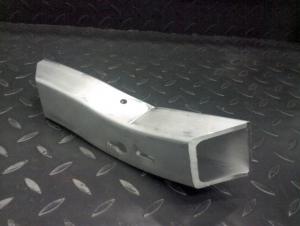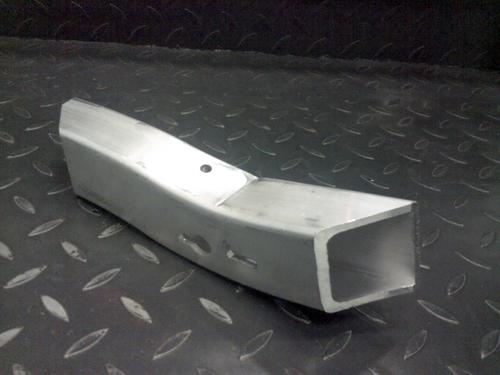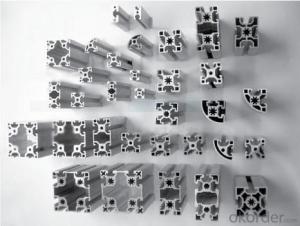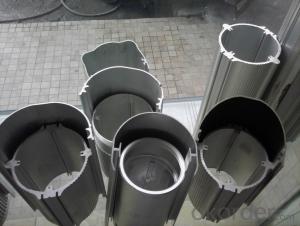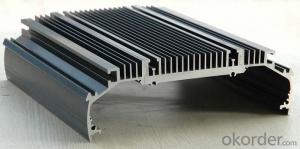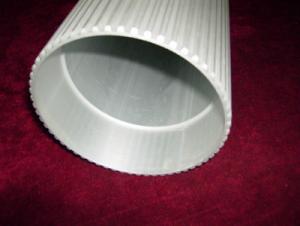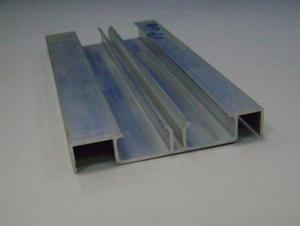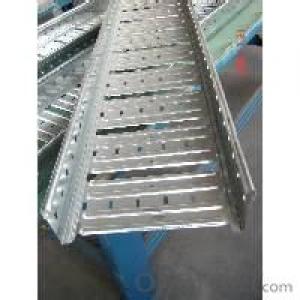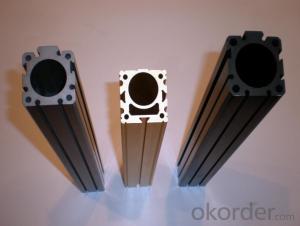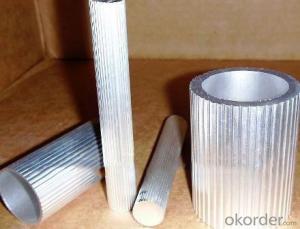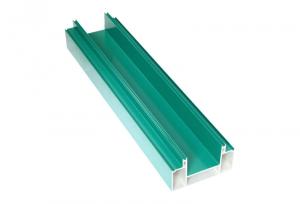Bosch Extruded Aluminum Profiles - Aluminium Profile
- Loading Port:
- China Main Port
- Payment Terms:
- TT OR LC
- Min Order Qty:
- -
- Supply Capability:
- -
OKorder Service Pledge
Quality Product, Order Online Tracking, Timely Delivery
OKorder Financial Service
Credit Rating, Credit Services, Credit Purchasing
You Might Also Like
Aluminium Profile
Our advantages:
1)we can provide"one- stop service from melting,extruding,surface treatment,machining,welding,assembling to mould design & building.
2)we have a good capacity of precise machining,cnc machining.
3)we can provide good quality with reasonable price.
Service:
Our advantages:
1)we can provide"one- stop service from melting,extruding,surface treatment,machining,welding,assembling to mould design & building.
2)we have a good capacity of precise machining,cnc machining.
3)we can provide good quality with reasonable price.
Products:
Description | Aluminium Profiles |
Alloy | Al 6063 T5 /T6 or 6061 or 6005 or as per customers' need |
Finish | Anodizing or powder coating with various colors |
Packing | Foam sheet,poly bag,plastic bag,carton |
Brand | YMJ |
Original place | China |
Certificate | ISO9001 |
Equipments:
7extruders,2 six meters long anodizing lines,1 twelve meters long anodizing line(including dyeing & electrolysis).1 powder coating line,5 melting lines,12 CNCs(including 2 machines which can mill 6.5m long profile),10 argon arc welding machines and multiple machines for cutting,drilling,punching,milling,shearing and bending,2 spectrum scanners,1 projective instument,1 extension test machine,1 mechanical property tester,1 Rohs tester and 1 metallurgical microscope.Service:
We're a well- established manufacture for aluminium products,we're confident we can give our customers complete satisfication.
We can provide good quality with reasonable price.- Q: Can aluminum profiles be used for display cases or cabinets?
- Certainly, display cases or cabinets can make great use of aluminum profiles. These profiles are renowned for their lightweight nature, durability, and sleek, contemporary aesthetic, making them a favored option for showcasing products or housing belongings. Their versatility is further enhanced by the ease with which they can be personalized and their availability in various sizes and shapes to meet specific design needs. Moreover, these profiles possess exceptional resistance to corrosion, rendering them suitable for both indoor and outdoor applications. Additionally, their remarkable thermal conductivity can prove advantageous in regulating temperatures within display cases or cabinets. All in all, aluminum profiles offer a diverse and appealing solution for constructing display cases or cabinets.
- Q: Can aluminum profiles be used in the construction of data centers?
- Data centers can utilize aluminum profiles for construction purposes. The utilization of aluminum profiles in this industry offers numerous benefits. To begin with, aluminum possesses a combination of lightweight and sturdy properties, rendering it an excellent material for constructing structures that require the capacity to withstand heavy loads. Considering that data centers often accommodate racks of servers and other equipment, the use of aluminum profiles can provide the necessary strength without adding excessive weight. Moreover, aluminum profiles offer extensive customization options and can be easily fabricated to meet specific design requirements. This flexibility enables efficient space utilization within a data center, as the profiles can be tailored to fit the facility's layout and dimensions. Furthermore, aluminum exhibits resistance to corrosion, a crucial attribute in the data center environment where equipment produces heat and humidity levels can be high. By employing aluminum profiles, the risk of rust and corrosion is minimized, thereby ensuring the infrastructure's longevity and reliability. Additionally, aluminum is an environmentally sustainable and recyclable material, aligning with the increasing demand for eco-friendly construction practices. The utilization of aluminum profiles in data center construction contributes to reducing the facility's carbon footprint. In conclusion, due to their strength, customization capabilities, corrosion resistance, and sustainability, aluminum profiles can indeed be employed in the construction of data centers.
- Q: Aluminum profile 606360056061, T5 and T6 hardness GB, how much?
- Generally divided into Vivtorinox hardness, Rockwell hardness and Vickers hardness and webster hardness. Our enterprises are generally in accordance with webster hardness test, GB 6063-T5 8HW 6063-T6 11.5HW6005-T5 15HW 6005-T6 15HW6061-T5 15HW 6061-T6 15HWIf you need other hardness units, you can refer to the conversion
- Q: How to sell and sell industrial aluminium profiles?
- According to relevant data, due to the extensive application of industrial aluminum profiles in various industries, it is predicted that in 2012 China's demand for industrial aluminum will exceed 4 million tons. For the production and sale of industrial aluminum profile, it is also a great motivation. Customers of industrial aluminum profiles usually don't sign bills at one time. The reason is because they are generally not "individual", but the enterprises and institutions, including schools, government and other institutions, which determines that they are not impulse spending, but need to go through approval at all levels down, so relative to some other products, the president of a number of possible cycle.
- Q: Differences between industrial aluminum and iron products
- Aluminum bar is aluminum bar, through hot melt, extrusion, so as to obtain different cross-section of aluminum. While industrial aluminum can usually be divided into building aluminum, aluminum radiator, general industrial aluminum profiles, rail vehicle structure Aluminum Alloy profiles, aluminum mounting etc..
- Q: This question asks for the correct procedure to install aluminum profiles.
- <p>To install aluminum profiles correctly, follow these steps: 1. Measure and mark the positions where the profiles will be installed. 2. Clean the surfaces to ensure proper adhesion. 3. Use a suitable adhesive or mechanical fasteners recommended for aluminum. 4. Align the profile with the marked positions and secure it in place. 5. Check for level and plumb, and adjust as needed. 6. Wipe away any excess adhesive and clean the profile. 7. Allow the adhesive to cure according to the manufacturer's instructions. 8. Inspect the installation for any gaps or misalignments and make corrections if necessary. Always refer to the specific installation guidelines provided by the aluminum profile manufacturer for best results.</p>
- Q: How do aluminum profiles contribute to sustainable building practices?
- There are several reasons why aluminum profiles are crucial in promoting sustainable building practices. To begin with, aluminum is a material that can be recycled multiple times without any loss in quality. This recyclability significantly reduces the need for extracting and processing new aluminum, which is a process that consumes a lot of energy and harms the environment. By using aluminum profiles in construction, we can greatly reduce the demand for new aluminum production and thus conserve natural resources and decrease carbon emissions. In addition, aluminum profiles are both lightweight and strong, making them ideal for creating energy-efficient structures. Their lightweight nature reduces the load on the building's foundation and structural elements, resulting in lower material requirements and reduced construction costs. Furthermore, a lighter structure requires less energy for heating and cooling, leading to decreased energy consumption and reduced greenhouse gas emissions throughout the building's lifespan. Moreover, aluminum profiles have excellent thermal and acoustic insulation properties. When used correctly, they can contribute to the overall energy efficiency of a building by minimizing heat loss or gain through windows and doors. This means that less reliance is placed on artificial heating and cooling systems, resulting in decreased energy consumption and lower utility bills. Another advantage of aluminum profiles is their durability and low maintenance requirements. They are resistant to corrosion, weathering, and UV rays, which ensures a long lifespan and reduces the need for frequent replacements and repairs. This not only saves resources but also reduces waste generation and the use of landfills. Finally, aluminum profiles offer great design flexibility and can be easily incorporated into various architectural styles and designs. This versatility allows architects and builders to create structures that are both visually appealing and functional, while still adhering to sustainable building practices. In conclusion, aluminum profiles contribute to sustainable building practices by being recyclable, lightweight, energy-efficient, thermally insulating, durable, low maintenance, and versatile. By using aluminum profiles in construction projects, we can reduce our environmental impact, conserve natural resources, and promote a more sustainable future.
- Q: Can aluminum profiles be used in the production of industrial robots?
- Indeed, industrial robots can be manufactured utilizing aluminum profiles. Aluminum, being a lightweight and long-lasting material, presents numerous benefits when constructing robotic systems. Its strength-to-weight ratio is impressively high, rendering it ideal for constructing solid and dependable robot structures. Machining aluminum profiles is a straightforward task, enabling the creation of intricate and precise designs for diverse robot components, including frames, arms, and joints. Furthermore, aluminum's resistance to corrosion proves advantageous in industrial environments where robots may encounter harsh chemicals or challenging surroundings. In summary, aluminum profiles offer a versatile and cost-effective solution for the production of industrial robots.
- Q: What are the different extrusion methods used for aluminum profiles?
- Aluminum profiles can be produced using various extrusion methods. Here are some commonly employed techniques: 1. The most frequently used method is direct extrusion. It involves heating an aluminum billet and forcing it through a die by means of a ram. The aluminum is shaped into the desired form as it passes through the die. Direct extrusion is known for its efficiency and cost-effectiveness. 2. Indirect extrusion, on the other hand, requires the billet to remain stationary while the die moves towards it. The die pushes the aluminum through the stationary billet, resulting in the desired shape. This method is often favored for intricate shapes or when precision is crucial. 3. Impact extrusion employs a punch to forcefully drive the aluminum billet into a die cavity. The high impact causes the material to flow into the die and take on its shape. This method is commonly used for manufacturing hollow parts or tubes. 4. Hydrostatic extrusion relies on the use of a fluid, such as oil or water, to pressurize the billet and guide it through a die. The elevated fluid pressure enables greater control and precision in shaping the aluminum. Hydrostatic extrusion is typically chosen for producing high-quality, strong aluminum profiles. 5. Cold extrusion takes place at room temperature, with the aluminum billet being extruded without heating. The lower temperature contributes to increased strength and improved surface finish. Cold extrusion is popular for creating small, intricate aluminum profiles. Each of these extrusion methods offers its own set of advantages and is suitable for different applications. Factors such as profile complexity, desired strength, surface finish requirements, and cost considerations play a role in determining the most suitable method.
- Q: RT: you! What are coated aluminum profiles? What's the surface treatment? What's the difference between grain transfer and wood grain transfer? Thank you first!!!
- First, the noun explanation:Aluminum is coated on the surface of various lines in aluminum on the coated PVC film, decorative paint paper, wood skin, and instead of the traditional painting process, the formation of decorative materials, coating materials can be used for the production of door, wardrobe Rome top line, Rome line, column, wardrobe baseboard, gusset plate, curtain rod Aluminum Alloy, window, doors and windows, frames etc..Two. The origin of coated aluminum profile:Aluminum Alloy profiles the most common and most primitive (referred to as aluminum), is Aluminum Alloy itself color, silver white, but this state for a long time, Aluminum Alloy surface will be oxidized into a dark gray or black. In order to solve this problem, the most common practice in our country is to spray a layer of powder (high temperature treatment) on the surface, that is electrostatic powder spraying. Also, fluorocarbon electrophoresis processing processing, wood grain transfer, the transfer grain processing fidelity is not high, in order to solve this problem, there are a kind of film processing, high fidelity, but because the process requirements must be done in the film before powder spraying treatment, coupled with higher requirement on the film itself, so the cost is higher, more for a second tier city high-grade residential.
Send your message to us
Bosch Extruded Aluminum Profiles - Aluminium Profile
- Loading Port:
- China Main Port
- Payment Terms:
- TT OR LC
- Min Order Qty:
- -
- Supply Capability:
- -
OKorder Service Pledge
Quality Product, Order Online Tracking, Timely Delivery
OKorder Financial Service
Credit Rating, Credit Services, Credit Purchasing
Similar products
Hot products
Hot Searches
Related keywords
